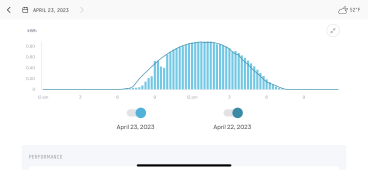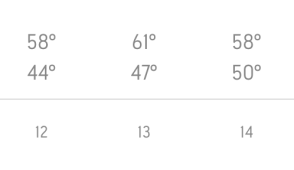sethland
New Member
I just got rooftop solar on April 5. Where I live in California, soot is a slow and steady phenomenon. April 12th, April 13th, and April 14th, 3 identical cloudless days, I noticed my production was slightly decreasing day-over-day about 0.7% each day on average. But over these days, the amount of sunlight was increasing by 0.3% each day. Today I had time to go on the roof, experiment and wash 40% of my panels. They had a thin layer of soot on them. in the graphic, see if you can spot at what time I cleaned the panels. I'll clean all the panels to see what my total boost in production is.









